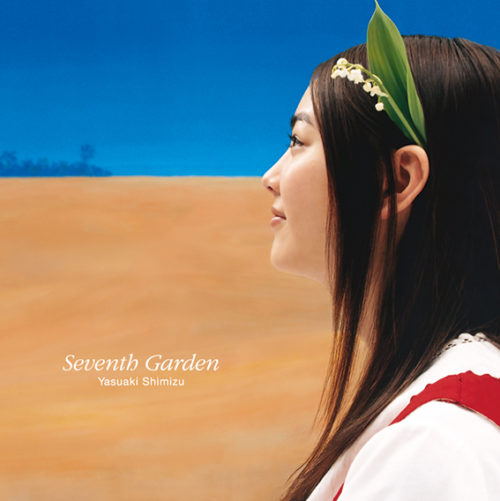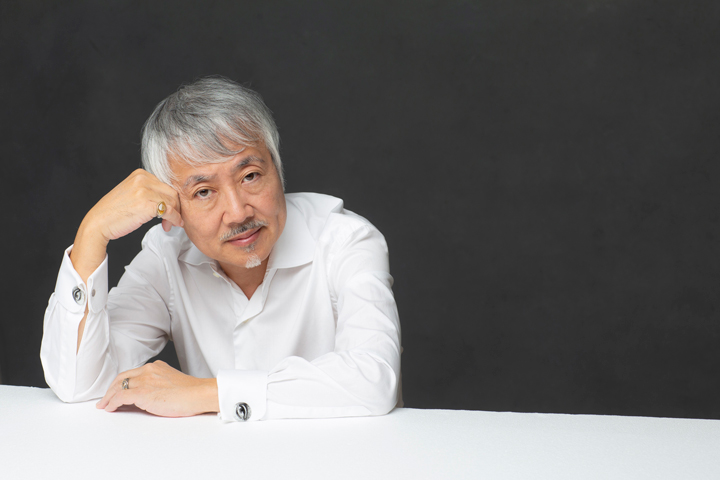CONTACT
YASUAKI SHIMIZU
SEVENTH GARDEN
SEVENTH GARDEN
セヴンス・ガーデン

ビクター VICL-61390
Victor Entertainment VICL-61390
- Amazon
- iTunes
-
1Zasso (雑草) Zasso雑草
作詞:清水靖晃
タンポポ
セリ
ミズアオイ
キカシグサ
スズメノカタビラ
ノビル
ヒルガオ
ニワホコリ
オオフサモ
エゾノサヤヌカグサ
タマガヤツリ
サンショウモ
ヒメミソハギ
ミミナグサ
ヨモギ
シロツメクサ
クサネム
オオアカウキクサ
ヒデリコ
ミズガヤツリ
ミゾハコベ
カキオドシ
イチョウウキゴケ
スズメノテッポウ
フサモ
カラスノエンドウ
ヤブガラシ
オオバコ
ヒメスイバ
ドクダミ
ホシクサ
タカサブロウ
ナズナ
ウキクサ
コウキヤガラ
ハコベ
ヒロハイヌノヒゲ
スベリヒユ
ヒルムシロ
ホタルイ
オオアブノメ
シャジクモ
クログワイ
シズイ
ヘラオモダカ
ヒメミソハギ
スカシタゴボウ
チョウジタデ
オモダカ
タイヌビエ
オオカナダモ
ヒメギク
イヌホタルイ
イガガヤツリ
コナギ
ススキ
Zasso
Lyrics: Yasuaki Shimizu
Tanpopo
Seri
Mizuaoi
Kikashigusa
Suzumenokatabira
Nobiru
Hirugao
Niwahokori
Oofusamo
Ezonosayanukagusa
Tamagayatsuri
Sanshoumo
Himemisohagi
Miminagusa
Yomogi
Shirotsumekusa
Kusanemu
Ooakaukikusa
Hideriko
Mizugayatsuri
Mizohakobe
Kakiodoshi
Ichouukigoke
Suzumenoteppou
Fusamo
Karasunoendou
Yabugarashi
Oobako
Himesuiba
Dokudami
Hoshikusa
Takasaburou
Nazuna
Ukikusa
Koukiyagara
Hakobe
Hirohainunohige
Suberihiyu
Hirumushiro
Hotarui
Ooabunome
Shajikumo
Kuroguwai
Shizui
Heraomodaka
Himemisohagi
Sukashitagobou
Choujitade
Omodaka
Tainubie
Ookanadamo
Himegiku
Inuhotarui
Igagayatsuri
Konagi
Susuki
-
2Magic Stone (マジック・ストーン) Magic Stone
-
3Momo no Hana (モモノハナ) Momo no Hana
-
4Mushi (虫) Mushi
-
5Hana ga Saitara (花が咲いたら) Hana ga Saitara花が咲いたら
作詞:生田 朗
仮に 花が咲いたら
風が吹いて
水蒸気と
三日月が
壁から滲出すので
外が暑いし
夢の続きを
花が咲いたら
籠に仕舞っておいたのに
いつの間にか
何処かへ
溶けて 螺旋状になり
しかも
花が咲いたら
二重になるので
僕らは
小道を通って
花粉の中を
写真を写しに
静かの海と言う
花が咲いたら
見知らぬ街へ
出掛けた
としよう
Hana ga Saitara (When the flowers bloom)
Lyrics: Aki Ikuta
Translation: Johnny Barrett
When
Flowers bloom
A wind blows
Vapour
And a sickle moon
Ooze from walls;
It's hot outside
A dream continues ...
When
Flowers bloom
They dance in baskets
Until suddenly
They are no longer
Melting
Forming spirals. When
Flowers bloom
They embrace.
We take a path
Through the pollen
Taking photographs
Of a seemingly silent sea.
When
Flowers bloom
We stroll
Down an unknown road
In a whirl ...
-
6Industria Botanica (インドゥストリア・ボタニカ) Industria Botanicaインドゥストリア・ボタニカ
作詞:リサ・スキアヴォン
Valeriana rossa
Epifillo
Ibisco
Opunzia
Enotera bianca
Vitalba
Campanella
Arancio amaro spinoso
Lonicera
L'Elleboro nell'ombra
Incanto di Rosa
Vite rampicante
E ricordando Andromeda
Passiflora
Glicine
Anemone giapponese
Fiordaliso
Margherite qui e l
Bella di notte
Sambuco nero
Capelvenere
Agave
Dalia pom pon
Licoride raggiata
Campanula dei Carpazi
Calicanto d'occidente
Mughetto
Scilla di Spagna
Narciso incomparabile
Ecco i fiori leggeri delle Camelie
Ma l'Erba miseria dove sar?
Begonietta
Canna d'India
Godenzia
Amaranto piumoso
Guardano da lontano i Girasoli
Garofanino delle Alpi
Nannufero
Clematide cinese
Orchidea
Astrofito
Bletilla
Le Calendule nel cielo d'estate
Robinia
Saggittaria
Addormentate sull'Erba pignola
Palma delle Canarie
Magnolia stellata
Ibisco siriaco
Papavero d'Oriente
Tibuchina
Ninfea gialla
Camomilla inodora
Salvia splendida
Settembrini
Palla di neve
Papiro
Viburno peloso
Cereo peruviano
Gelsomino, Gelsomino, Gelsomino
Industria Botanica
Lyrics: Lisa Schiavon
Valeriana rossa
Epifillo
Ibisco
Opunzia
Enotera bianca
Vitalba
Campanella
Arancio amaro spinoso
Lonicera
L'Elleboro nell'ombra
Incanto di Rosa
Vite rampicante
E ricordando Andromeda
Passiflora
Glicine
Anemone giapponese
Fiordaliso
Margherite qui e l
Bella di notte
Sambuco nero
Capelvenere
Agave
Dalia pom pon
Licoride raggiata
Campanula dei Carpazi
Calicanto d'occidente
Mughetto
Scilla di Spagna
Narciso incomparabile
Ecco i fiori leggeri delle Camelie
Ma l'Erba miseria dove sar?
Begonietta
Canna d'India
Godenzia
Amaranto piumoso
Guardano da lontano i Girasoli
Garofanino delle Alpi
Nannufero
Clematide cinese
Orchidea
Astrofito
Bletilla
Le Calendule nel cielo d'estate
Robinia
Saggittaria
Addormentate sull'Erba pignola
Palma delle Canarie
Magnolia stellata
Ibisco siriaco
Papavero d'Oriente
Tibuchina
Ninfea gialla
Camomilla inodora
Salvia splendida
Settembrini
Palla di neve
Papiro
Viburno peloso
Cereo peruviano
Gelsomino, Gelsomino, Gelsomino
-
7Elizabeth (エリザベス) Elizabeth
-
8Suiteki (水滴) Suiteki
-
9Destiny No. 1 (ディステニー No. 1) Destiny No. 1
-
10Yuki (雪) Yuki
「まずは静寂、そして… ”音楽” の規範を超越した、懐かしくもまったく新しい音達」
清水靖晃プロデュースによる、浜名湖花博 2004「庭文化創造館」のサウンドインスタレーションのために制作した音源やアプローチを基にしている。
Quietude, silence… Familiar yet unknown sounds that redefine the parameters of music.
A condensed version of the Sound Garden installation Shimizu created for Pacific Flora 2004’s Dream Garden Factory, this album expresses the “garden of the mind” in a careful mix of sonic fragments premised on silence as the source of all sound.
-
ともかく“庭”と言うことで、アルバムを作ろうと思いました。 庭と言っても、実際の庭というより、精神の“庭”。これは元々「庭文化創造館」の為に考えた事ですが、それを凝縮してアルバムにしてしまおうと…。庭文化創造館では、毎日、開館から閉館まで8時間という時間枠があり、無音を主体にしたアプローチを行うのですが、残念ながらてCDには時間の制約があります。こまったなぁ~と思ったのですが、よく考えたら、精神の“庭”のポイントは、リニアな時間の長さじゃないんだなぁ~~。結局、音模様に1分も100年も無いのです。と、いうことで、こうなりました。
-
児童合唱にこんな可能性があるのをなぜ、誰も気がつかなかったのだろう。あどけないと見せかけるや急にだだをこねるような展開は、清水靖晃にしかできない。妙に気持ちの落ち着く打ち込みビート、脱力感の心地よいソプラノ、トランポリンでスキップしようとしているようだ。うまく乗ったら高く跳べる。でもうっかりするとひっくり返る。それもまた楽し。
(音楽学者 細川周平)
Seventh Gardenはワンダフルだ。
きれいで、控えめで、おかしく楽しい。 『Time and Again』やバッハ素材の扱いから生まれたユニークな音楽的ヴォキャブラリーやパースペクティブを発展させた素晴らしい到達点であり、私的な声だ。うまくできている。(音楽プロデューサー/作曲家 デヴィッド・カニンガム)
-
Six Soundscapes for Gardens
Sound emerges from silence, and in the Sound Garden, silence is the central “sonic” element that flirts with subtle noises in each of the six theme gardens. This concept emerged from the awareness that we live rather unconsciously with the barrage of sound that fills our every day. The kaleidoscopically minimal soundscapes visitors experience in the Sound Garden were resized to fit the space constraints of a CD, in various approaches that make use of such elemental restrictions in a constructive way.For the opener “Zasso,” sixty some names of weeds were sung and recorded one by one. While in the Sound Garden these form single entities that kick in every now and then, the album version required a tighter arrangement that resulted in a surprisingly harmonic combination of children’s chorus and saxophone.
“Elizabeth” is a composition originally made for the two multichannel speakers (of the same name) designed specially for the Sound Garden. A humming female voice from the speakers in the center “interacts” with bird sounds audible from seven small speakers arranged in a circle around it. Like “Zasso,” what was once a loose arrangement of sounds and silence appears here in the compact format of a “song.”
“Mono no Hana” and “Hana ga Saitara” are reworks of pieces originally included in Shimizu’s unreleased recording Kiren and the Mariah album Utakata no Hibi (1983). The lyrics on “Hana ga Saitara” are interpreted this time by Miyako Koda from Dip In The Pool, “Momo no Hana” comes across with the same growing tension as Ravel’s “Bolero” — albeit a rustic Japanese edition.
The album further offers ventures into rhythmic, sine wave-based electronica, a soprano rendition of flower names in Italian (“Industria Botanica”), Shimizu’s trademark sonic collage (“Destiny No. 1”), and an original baroque-style composition for sampled celesta (“Yuki”).
The Japan Times, 2004
While most ambient music evokes a place or an ambience figuratively, (Brian Eno’s “Music for Airports” was, after all, not composed for a departure lounge), Yasuaki Shimizu’s latest musical challenge was to create music that worked on both a literal and metaphoric level. His current release, “Seventh Garden,” was originally composed as the “soundscape” for the massive Pacific Flora 2004 exhibition currently running in Shizuoka.Playing in eight-hour cycles through a specially designed, flower-shaped speaker system, “Seventh Garden” accompanies visitors as they wander through the flora (and in some of the more avant-garde installments, robots and glass-blown figures) that make up the six consecutive gardens of the central exhibit, the “Dream Garden Factory.”
In lesser hands, this could easily have become a cliche of singing birds and falling water, or worse, another dreary, droning electronica piece. But Shimizu’s saxophone renditions of Bach’s Cello Suites have shown him to be a master of balancing silence, sound and echo, a skill well used on “Seventh Garden.”The record begins with a children’s chorus reciting the names of different kinds of weeds. Spare and spacious, it achieves the solemnity of a Gregorian chant. Other tracks on the album venture into more electronic realms, complete with sine waves and unidentifiable throbs and bleeps, but like Shimizu’s Bach, the music always gently swings. Both augmenting the scenery of the garden while also becoming a sonic sculpture in itself, it is truly the “seventh garden” of the exhibition, what Shimizu has described as a “garden of the mind.”
— Suzannah Tartan
-
I set out to make an album on the “garden” theme. I’m not talking here about a garden with flowers and trees, but rather a “garden of the mind.” I initially developed the concept for the Dream Garden Factory, then took it a next step further by concentrating everything onto a disc. While the 8-hour time frame for the Sound Garden afforded an approach that builds on silence as the central element, the time constraint of a CD was another reality. What appeared to be a hurdle at first, turned out to be groundless worry. Linear time is nonexistent in the “spiritual garden,” and the measurement of time isn’t applicable to sound anyway.
-
“Seventh Garden is wonderful, pretty, understated, funny and an accomplished extension of that unique musical vocabulary or perspective which has origins in Time and Again and the treatments of the Bach material. An individual voice. Well done.”
— David Cunningham, producer/composer“Why had I never realized a children’s chorus harbored this kind of potential? Feigning naïveté then suddenly becoming petulant is something only Yasuaki Shimizu can pull off. Uncannily poised beats and listlessly comforting soprano—like trying to skip on a trampoline. Hit it right, and you soar; be caught off guard, and you tumble. That too, is part of the fun.”
— Shuhei Hosokawa, music critic
作曲/プロデュース:清水靖晃
「モモノハナ」:1984年録音、未発表『キレン』より/ニューバージョン
「花が咲いたら」:1983年 マライア アルバム『うたかたの日々』より/ニューバージョン
清水靖晃:エレクトロニクス、テナーサキソフォン、木琴、バーチャイム
ひばり児童合唱団: ヴォーカル、榊原哲: 指揮(1、5)
甲田美益子: ヴォイス(5)
白石圭美: ソプラノ(6)
吉田詠都子: ハミング(7)
レコーディング:叶眞司、清水靖晃、吉田和紀(1、5)
ミキシング: 叶眞司
レコーディング スタジオ:パスウェイ、サブマリン、サウンドシティ (1、5)
Composed and produced by Yasuaki Shimizu
“Momo no Hana”: new recording of the 1984 unreleased track from Kiren
“Hana ga Saitara”: new recording of the 1983 release on Mariah’s Utakata no Hibi
Yasuaki Shimizu: tenor saxophone, xylophone, bar chime, electronics,
Hibari Childresn’s Chorus: vocals (1,5)
Satoshi Sakakibara: conductor (1,5)
Miyako Koda: voice (3)
Tamami Shiraishi: soprano (6)
Etsuko Yoshida: humming (7)
Recorded by Yasuaki Shimizu at Submarine, Kazunori Yoshida (1, 5) at Sound City (Tokyo)
Recorded/mixed by Shinji Kano at Pathway (Tokyo)
